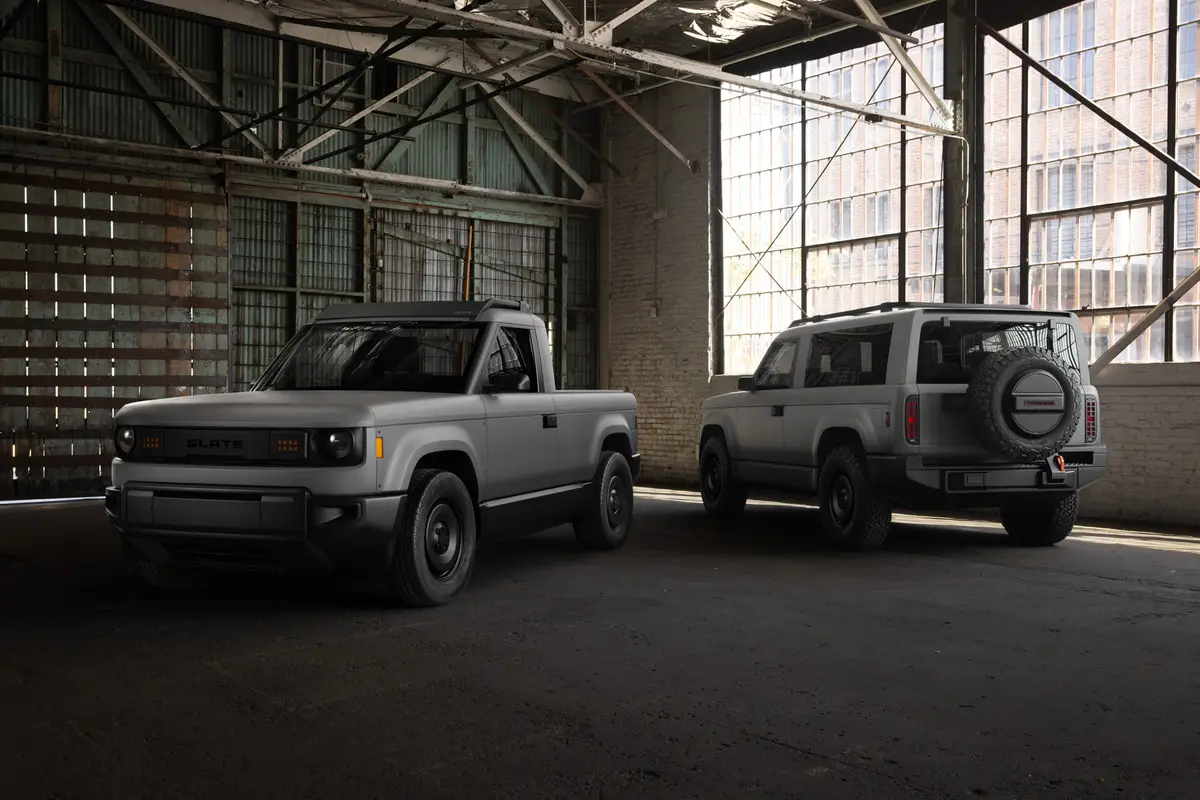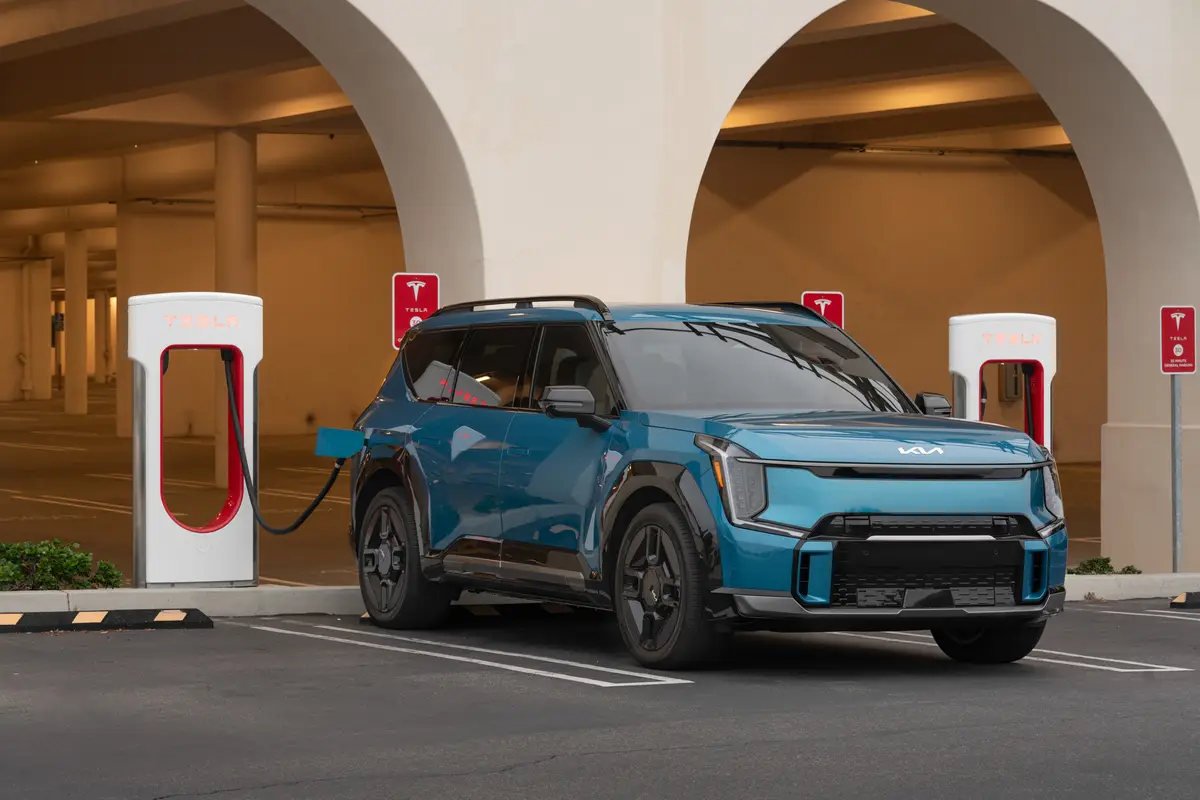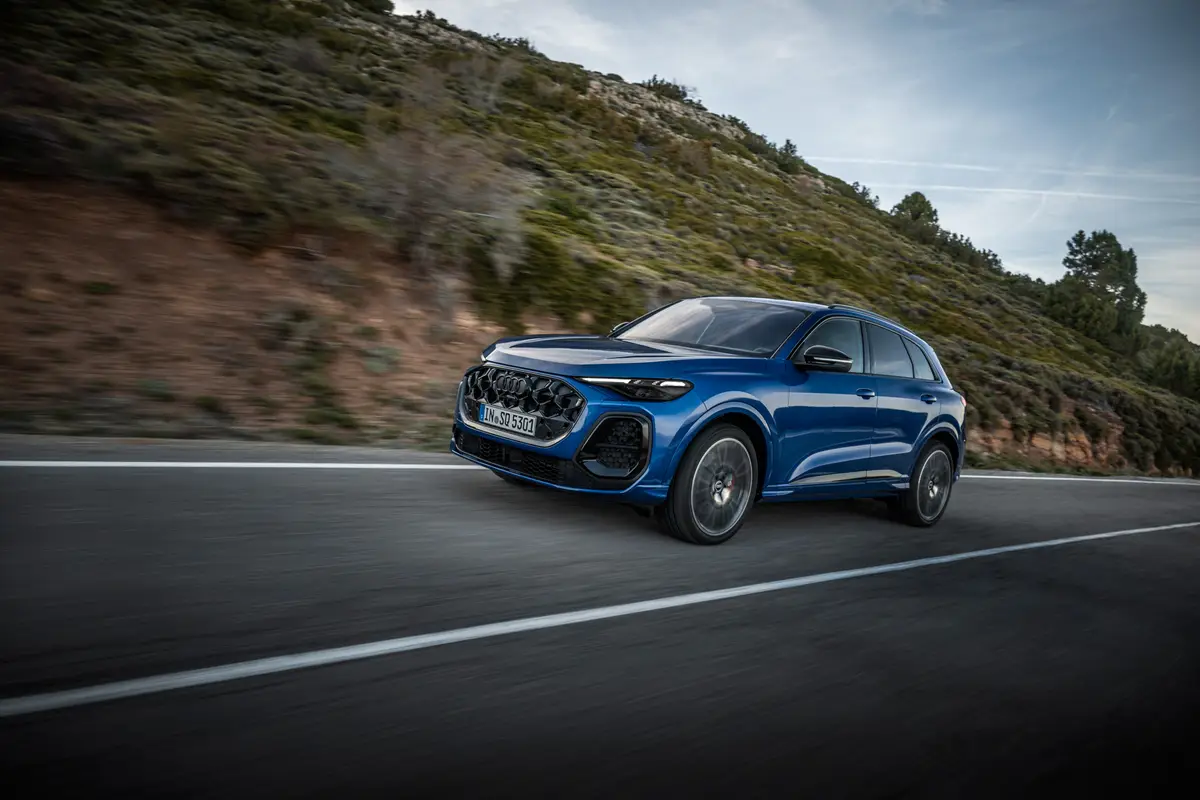Los Angeles Times's view
Splish, splash, we were taking a bath. Car pools lived up to their names. Fast lanes were for swimmers and stray seafood flopping up Topanga Canyon. Heaven help those in the Monsoon of ’95 who hadn’t replaced ground cover from the Fires of ’93 or chimneys from the Shaker of ’94.
Yet God bless the synchronicity that brought California the worst of British weather and me the best of British sport utilities.
For neither rain nor silt nor flooded intersection could stay the 1995 Range Rover 4.0SE from its inaugural rounds as the latest and slickest of amphibious aristocracy.
We free-wheeled and four-wheeled up the Hollywood and Pasadena rivers while everything else was dog-paddling sideways. Hub-high mudslides were its sustenance. It went where only hippos and Humvees and the occasional humpback whale dare. In the playful process, its color changed from Avalon blue to Ghirardelli brown.
Of course, the Range Rover’s talent for doing everything in the dirt is a global given.
Its aura may be that of royal off-roader. But when it comes to riding roughshod over Greenland or winching its own weight through rain forests, the Range Rover is to sport utilities what Zippo is to lighters: Unbreakable, a little ugly, but guaranteed to work every time.
It has been 25 years since Land Rover of Britain–builders of aluminum toughs for military units and desert explorers–designed a Range Rover for gentleman farmers and suburban sportsmen. Lined in walnut and leather, this first exercise in agri-leisure motoring cost $3,200 and was milord’s study powered by a Buick V-8.
America quickly grabbed the fad of elegant sod-busting, and the Range Rover escalated in desirability, mechanical innovation and price. It also became an icon of monogrammed parking slots from Paramount Pictures to Monte Carlo.
Now comes the 4.0SE–the first complete make-over of the classic Range Rover, scheduled for showrooms in March. It’s still powered by a V-8, but Rover’s own aluminum power plant making 190 horsepower. The interior continues to be organically grown. But for those who indulge in kicking themselves for not buying in the ’70s, the price is up to $54,000, $1,500 more than last year.
Fifty-four big ones, however, buys a fine redesign balanced between virtues untouched and thoughtful exorcism of flaws.
Anxious to maintain its leading edge, Land Rover has stuffed this new vehicle with more electronic capabilities than a space shuttle.
There are remote controls to open doors and to reset seats, mirrors and lighting to places predetermined by Drivers One and Two, wife and husband, father and son. A basic parametric alarm system is backed by a volumetric sentinel that senses motion to remind you that baby has been left in the back seat. There’s even a super-lock mode to freeze doors and disconnect all electrical circuits the second a car thief smashes a window.
“Ab out the only way you can steal this vehicle,” said Land Rover spokesman Bill Baker, “is to pick it up and carry it away.”
Of course, the wizardry includes BECM (Body Electronic Control Module), which raises and lowers the entire vehicle more than five inches depending on the depth of the goop or the height of your garage door. Also a trip-measuring computer, sensors to detect freezing conditions, and enough warning gongs and lights to report everything from open tailgates to a passenger’s in growing toenails.
*
Unfortunately, all this gadgetry may be way beyond owner needs. Our test consumed two Range Rover 4.0SEs and both were casualties of electric devilkins.
The first had trouble starting from overnight slumber, and its LED flashed warnings of nonexistent engine and gearbox faults. The understudy performed much better, although it occasionally nagged about a burned-out parking-light bulb that wasn’t.
(A post-mortem of Victim No. 1 indica ed a faulty coolant sensor. An anomaly, a Range Rover physician said, that would be covered by the vehicle warranty. Mechanics are still poking at Victim No. 2.)
It will surprise no one that the country that brought us Charles and Camilla, Marmite and the totally bonkers “Absolutely Fabulous,” continues to build sport utilities with quirks as factory equipment.
Unlike other luxury cars where security dictates one tap of the remote opens only the driver door and a second touch releases the rest, entrance to a Range Rover is a matter of one tap opening all doors and the tailgate. It is entirely possible, however, that such a system is unnecessary in more genteel England and that car jackings are just a filthy American habit.
Still, it’s tough to find any reason why this most modern Range Rover can still be closed and locked by the antique method of depressing the lock button and slamming the door. It’s the best way we know of locking a key inside a car that is virtually jimmy-proof.
Range Rover’s cup holders are hidden inside the center console and must have been designed by Harry Blackstone. Press a button. Flip the console lid. Now slide it into the console, turn it downside up and, hey, presto, the underside of the lid becomes a four-cup tray.
Two hydraulic arms assist full operation in a display of Byzantine mechanicals that PBS habitues might see as Basil Fawlty’s $500 solution to a 50-cent problem.
Yet what is good about the4.0SE is very, very superior.
It is now longer, offers more headroom, legroom and 50% more luggage space than its predecessor. Although still a loafer from rest–with 0 to 60 m.p.h. taking 12 seconds–top speed is higher and the four-speed automatic transmission is mechanical satin.
The old, cumbersome system of shoving and kicking secondary levers to set the permanent four-wheel drive into low range has gone with yesterday. Now the gearshift, set in a large H-gate, selects either range and engages the lower gears when moved to the right. The system is instant, convenient and a total no-brainer.
The traditional ladder chassis is formed from thicker steel, there are new axles and a lighter, stiffer suspension system. In concert, they have erased that frightening float and wander in Range Rover’s freeway progress.
Steering is no longer an endless sequence of setting, correcting, readjusting and fine-shuffling the wheel. For the first time, Range Rover’s on-road handling is as stellar as its off-road manners.
Many changes are elemental and long expected. The spare tire has been moved under the floor for additional cargo room. This is a softer, more mid-Atlantic Range Rover and what looked like an aluminum packing crate is styled closer to the 20th-Century lines of Cherokee.
And the split tailgate has been counterbalanced to the point of one-hand, one-finger opening and closing.
Front seats continue as h igh chairs overseeing other poor clods stuck in traffic. The Range Rover still looks to be half glass, half aluminum with visibility top of the world, Ma. And if that $54,000 is kinda scary, remember that the 4.0SE is unquestionably the world’s most prestigious sport-utility and delivered with everything. Including two air bags, leather upholstery, power everything–including headrests–and enough polished wood trim to suggest the denuding of Sherwood Forest.
There is only one option available with the 4.0SE.
It is a special black paint job. Beluga black, of course.
1995 Range Rover 4.0SE
The Good: A three-ton classic revised and revitalized. Float-free suspension, tightened steering and smoother transmission give improved on-road performance. Child’s play shifting to low gears. Bumper-to-bumper snootiness. Will tow own weight.
The Bad: Styled more for Middle-America than British Midlands. Electrics might be too glitchy for their britches.
The Ugly: Costs close to a matched set of Land Rover Discoveries.
Cost Base Price: $54,000 As tested, $54,000 (Includes two airbags, 11-speaker sound system with CD, leather upholstery, power sunroof, walnut trim, automatic driver-passenger climate control, air conditioning, permanent four-wheel-drive, alarm, anti-lock brakes, traction control, power seats with memories, automatic transmission, cruise control, heated seats, fog lights and headlight wipers, power seats with two memories, tilt and telescoping steering. Phew!)
Engine 4.0-liter V-8 developing 190 horsepower.
Type Front-engine, four-door, 4WD luxury sport-utility.
Performance 0-60 as tested, 12 seconds. Top speed, manufacturer’s estimate, 118 m.p.h. Fuel economy, EPA city and highway, 12 and 16 m.p.g.
Curb Weight 6,130 pounds.
Latest news



